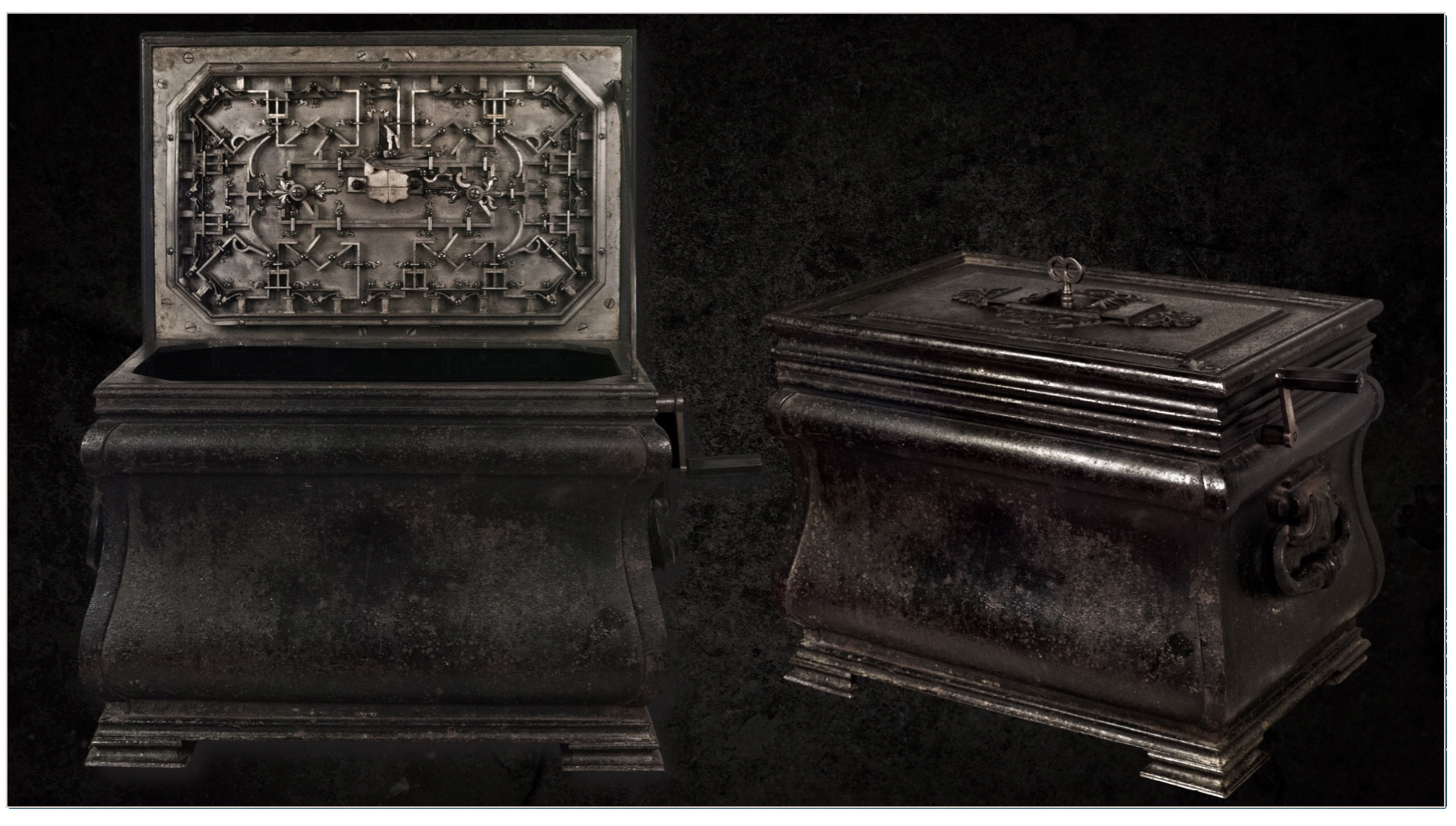Object of the Month: September 2018
Iron Safe
German, 17th Century
Since the fall of humanity, there has been a need to prevent theft. At the end of Genesis 3, Adam and Eve were barred from Eden to keep them from partaking of the fruit of the Tree of Life. The cherubim armed with a flaming sword became the keepers of the Garden.
Securing one’s valuables is a universal priority, and man has devised various methods to accomplish the goal. One of the most common means of protection is the safe. From hotel rooms to bank vaults, a safe seeks to provide both security and safety for treasured items including M&G’s Iron Safe, a type of strong box sometimes called a coffer, casket, lock box, or armada chest.
Safes have existed for more than two millennia—even the Romans built and used money chests to protect valuables. While locked chests were used primarily for storing and protecting special items, it was common practice through the eighteenth-century for the safe’s aesthetic design to equal the importance of its security.
 Early strong boxes were constructed of resilient and heavy wood that later was reinforced with metal straps and nails. As advancements were made in metallurgy, corresponding improvements were made in safe construction. M&G’s seventeenth-century safe would have been forged after the introduction of iron plates, and was probably crafted in Germany, where much of Europe’s iron work was manufactured. The cities of Southern Germany, such as Nuremberg, were particularly known for the craftsmanship of their blacksmiths and locksmiths, and demand was high for their lock boxes not only in Germany, but beyond.
Early strong boxes were constructed of resilient and heavy wood that later was reinforced with metal straps and nails. As advancements were made in metallurgy, corresponding improvements were made in safe construction. M&G’s seventeenth-century safe would have been forged after the introduction of iron plates, and was probably crafted in Germany, where much of Europe’s iron work was manufactured. The cities of Southern Germany, such as Nuremberg, were particularly known for the craftsmanship of their blacksmiths and locksmiths, and demand was high for their lock boxes not only in Germany, but beyond.
M&G’s safe exhibits the common elements of a top opening safe from the 17th century with a spring-loaded keyhole cover accessed by pressing a slightly disguised button. A large key releases an elaborate steel locking mechanism inside. Once unlocked, a hand crank is used to lift the heavy lid.
Joseph Aronson explains that “the security of this safe lay in its great weight, probably self-defeating even in its own day. The whole top is the lock, with a naively hidden keyhole in the decorative plate on the center. Even though it would certainly foil pickpockets and larcenous domestics, the type occurs in pictures of war booty in transit.” This safe was quite possibly bolted to a ship officer’s cabin to secure valuables and plunder.
Visit Historical Locks and LockWiki to learn more.
John Good, M&G Docent and Security Manager
Published in 2018
